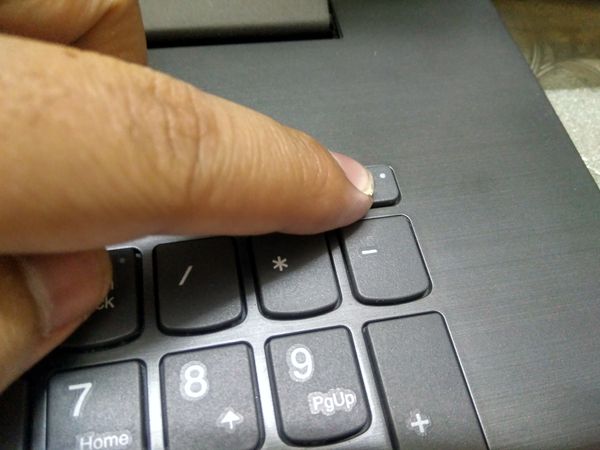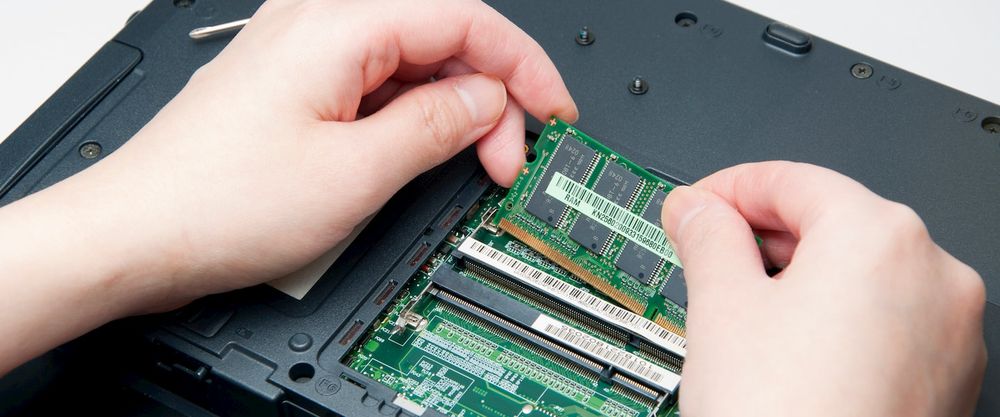The first thing to do if your Lenovo laptop won’t power on is to stay calm. Lenovo laptops are quite reliable devices, but like any other laptop user, it is possible that your Lenovo laptop will fail to turn on one day. The first step is to identify the source of the problem before applying the appropriate solution. Detecting the source of the failure is not always evident to a novice, but in this article, we will go over the steps to determine why your Lenovo laptop won’t power on.
Your Lenovo laptop won’t turn on in these cases:
- A problem with the power cable
- A dead battery
- A RAM problem
- BIOS problems
- Problems with vital hardware components
- A problem with the operating system
Follow the steps below to find out why your Lenovo laptop won’t turn on and how to solve the issue.
1. Check the power cable
The first thing to do if your Lenovo laptop won’t turn on is to check your power cable. If one of the LEDs on your Lenovo laptop lights up when you plug in the power cable you can go directly to the next step. However, if no LEDs light up when you plug in your laptop, start by checking your power cable by following the steps below:
- Place your laptop on a flat surface
- Make sure your Lenovo laptop’s power cable is correctly connected.
- Check if power cord is securely attached to the adapter (the second part of your power cable)

- Make sure the power cable is plugged into the wall socket
- Check that your battery is well inserted in your Lenovo laptop
- Test the wall outlet with another device (such as your phone charger) to make sure it is working properly
Consider unplugging and replugging the cord that connects to the adapter on one side, and the cord that connects the adapter to your Lenovo laptop on the other, in most cases, this is the source of the problem. Frequent movement of your laptop connected to the power supply often causes a bad contact between the power cable and the adapter of your charger.
2. Check the battery
Your Lenovo laptop won’t turn on if the battery is broken. To make sure that the battery is not the cause of the problem, the best would be to remove the battery from your Lenovo laptop and plug it directly into the wall outlet. If your computer turns on, the problem is most likely due to a battery failure. In this instance, all you need to do is replace your device’s battery. Make sure to buy an original battery identical to the one you removed in order to avoid any damage to your computer with a defective battery.
3. Hold The Power Button For 30 Secondes

Your problem can be solved by just pushing and holding the power button on your laptop. Your Lenovo laptop won’t turn on if the capacitors of your computer are abnormally charged with residual electricity. To avoid strange behavior such as the inability to boot your laptop, it’s a good idea to drain all leftover electricity from it.
- Turn off your laptop
- Unplug the power cable from the laptop and remove the battery.
- Press the power button of the PC for 30 seconds.
- Release the power button.
- Reconnect the power cable without the battery.
Some recent laptops have non-removable batteries; to reset them electrically, find a small hole on the bottom of the laptop and insert a paper clip, holding it for 15 seconds. If your Lenovo laptop won’t power on, try the instructions below to reset it.
- Unplug the power cable from the laptop and remove the battery.
- Locate a small hole at the bottom of your laptop
- Insert a paper clip inside the hole to press the reset button and hold for 15 seconds
- Plug your laptop again and try to turn it on
NB: The small hole where you have to insert a paper clip looks like the one on a modern smartphone where you have to press to insert a SIM card.
4. Check/Replace Defective RAM Stick

Your Lenovo laptop will not turn on if it has a RAM problem. Some laptops can produce a beeping sound to indicate a problem, although this is not always the case. It is advisable to check your RAM when your computer is not powering on. To do this, follow the steps below:
- Unplug the power cable.
- Remove the battery.
- Press and hold the power button for 5 seconds to discharge any residual electricity on your laptop.
- Open the cover. (Instructions on how to identify and open the cover that hides the RAM modules can be found in your laptop’s manual.)
- Remove the RAM memory sticks that are currently in place. To release the memory sticks, pull back the side clips.
- Replace the RAM sticks one at a time and try to turn on your laptop to see if any of them are defective.
- Check to see if the RAM sticks are correctly inserted and not loose on either side.
If your laptop contains more than one ram stick, try turning it on with one ram stick at a time and testing them one by one to determine if one is malfunctioning. This could be why your Lenovo laptop isn’t turning on.
If you discover that one of the RAM sticks is faulty, replace it with a new one, making sure that you choose RAM that is compatible with your laptop.
5. Check vital components and unplug all external devices.
If your laptop beeps continuously when you turn it on, it signifies that one of its components is missing or failing, preventing your laptop from coming on.
Check that no external devices (USB key, external hard drive, etc.) are attached to your laptop, as these might occasionally prevent it from starting. Then, ensure that the RAM of your laptop, as well as the hard drive of your PC, are properly installed; if a component, such as the RAM or the hard drive storing the operating system, is not correctly connected, your Lenovo laptop will not switch on.
If your Lenovo laptop will not power on if it has a BIOS problem. One way to verify that your computer’s BIOS does not prevent it from booting up is to reset. Follow these steps to reset your BIOS.
- Unplug your computer from its charger
- Remove the battery from the laptop
- Disassemble and open the laptop with a screwdriver following the manual provided with your laptop to access the motherboard
- Locate a small battery on the motherboard
- Remove the battery and wait 30 seconds for the BIOS to reset.
- Replace the battery and close your laptop.
- Turn on the laptop.
6.Use A Recovery DVD / Reinstall Windows
If your laptop powers on but displays an error message, the simplest way to avoid future problems is to reinstall Windows using a DVD or a bootable USB key. Insert the recovery DVD that comes with your laptop and follow the on-screen instructions to restore your machine to its original state. Make sure to thoroughly read the instructions to avoid overwriting and deleting your personal files.
If you choose to reinstall Windows, you can install it on another partition than the one where your old Windows is installed, for example, you can install Windows on partition D in order not to overwrite the old system installed by default on partition C on all PCs.
7. Call a technician or a skilled family member:
If you are unable to locate the problem by preventing your laptop from turning on, call a technician or a family member with computer skills to help you locate the problem by visually inspecting your laptop. Avoid opening your laptop or touching the internal components if you don’t know what you are doing so as not to cause more damage, leave it to people who are specialized or have already done this kind of manipulation.
8. Use Your Warranty right
If you recently acquired a Lenovo laptop that is still under warranty but will not power on, please do not tamper with it or attempt to repair it. Instead, contact Lenovo support by phone and return the laptop if necessary for repair or replacement. You must absolutely avoid opening your laptop to touch the internal components, since doing so will void your Lenovo laptop’s warranty. With a full warranty, Lenovo will repair or replace a damaged laptop at no additional cost to you within the warranty period.
See also: How To Start Windows 10 In Safe Mode While Booting







